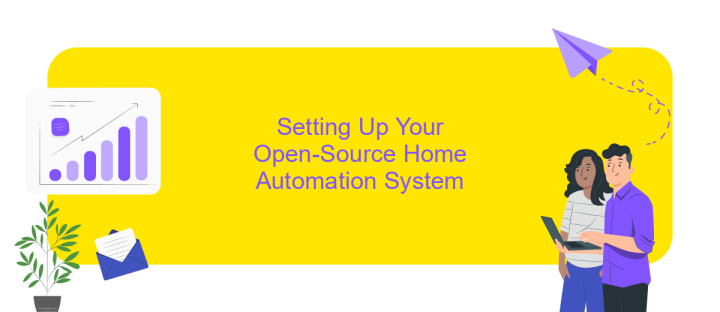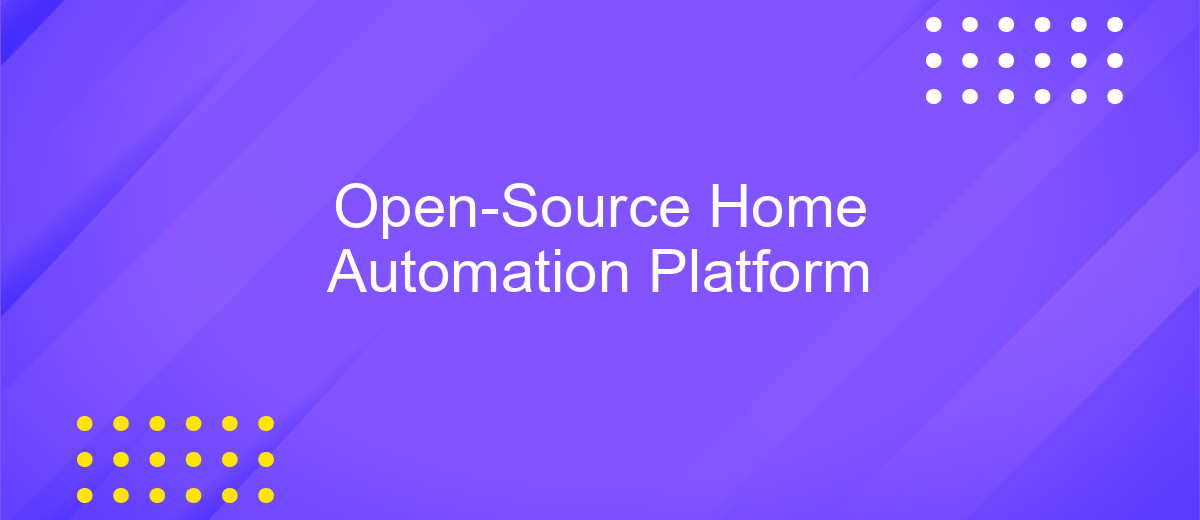Open-Source Home Automation Platform
Open-source home automation platforms are revolutionizing the way we interact with our living spaces. By leveraging community-driven development, these platforms offer customizable, cost-effective solutions for smart home enthusiasts. Users can seamlessly integrate devices, enhance security, and optimize energy consumption without being tied to proprietary systems. This article explores the benefits and features of open-source home automation, highlighting how they empower users to create personalized and efficient smart home environments.
Introduction to Open-Source Home Automation
Open-source home automation platforms are revolutionizing the way we interact with our living spaces. By providing customizable and cost-effective solutions, these platforms enable users to automate various aspects of their home environment, enhancing comfort, security, and energy efficiency. Unlike proprietary systems, open-source platforms offer transparency and flexibility, allowing users to tailor the system to their specific needs and preferences.
- Cost-effectiveness: Open-source solutions eliminate licensing fees and reduce overall costs.
- Customization: Users can modify and expand functionalities according to their requirements.
- Community Support: A vibrant community offers support, updates, and shared innovations.
- Interoperability: These platforms often integrate with a wide range of devices and technologies.
Embracing open-source home automation not only empowers individuals to take control of their smart home ecosystem but also fosters innovation through community collaboration. As the demand for smart home solutions grows, open-source platforms are poised to play a vital role in shaping the future of home automation, making it accessible and adaptable for everyone. By leveraging the power of open-source, users can create intelligent living spaces that evolve with their changing needs.
Choosing the Right Open-Source Platform

When selecting the right open-source home automation platform, it's crucial to consider your technical expertise and specific needs. Platforms like Home Assistant and OpenHAB offer extensive customization and a wide range of integrations, making them ideal for tech-savvy users. If you're looking for something more user-friendly, consider platforms with simpler interfaces and pre-configured options. Evaluate the community support and documentation available, as these resources can be invaluable in troubleshooting and expanding your system.
Another key factor is the platform's compatibility with your existing devices and future expansions. Check for integration capabilities with popular smart home products and services. Tools like ApiX-Drive can simplify this process by automating and managing integrations, ensuring seamless communication between different systems. Consider scalability and security features, as these will impact the longevity and safety of your setup. Ultimately, the right choice balances flexibility, ease of use, and support, aligning with your home automation goals.
Setting Up Your Open-Source Home Automation System

Setting up your open-source home automation system can be an exciting journey towards a smarter home. Begin by selecting a suitable platform that aligns with your needs and technical skills, such as Home Assistant, OpenHAB, or Domoticz. Ensure your hardware components, like sensors and smart devices, are compatible with the chosen platform. It's essential to have a reliable internet connection and a dedicated computer or Raspberry Pi to host your system.
- Download and install the platform's software on your chosen device.
- Connect your smart devices and sensors to the system, following the platform's documentation.
- Configure automation rules and scenarios to enhance your home's functionality.
- Test the system thoroughly to ensure all devices and automations work as intended.
- Secure your network and system with strong passwords and regular updates.
Once your system is up and running, explore additional integrations and customizations to tailor it to your lifestyle. Join online communities and forums to share experiences and gain insights from other users. With a bit of patience and creativity, your open-source home automation system will transform your living space into a more efficient and responsive environment.
Integrating Devices and Services

Integrating devices and services into an open-source home automation platform can significantly enhance the functionality and convenience of your smart home. By connecting various devices and services, you can create a seamless ecosystem that responds intelligently to your needs. The flexibility of open-source platforms allows you to customize and expand your home automation system without being tied to proprietary solutions.
To begin integrating devices, ensure that your chosen platform supports a wide range of protocols and standards, such as Zigbee, Z-Wave, and MQTT. This compatibility ensures that you can connect a diverse array of devices, from smart lights to security cameras, without encountering compatibility issues. Additionally, consider the platform's ability to integrate with popular services like voice assistants and cloud-based automation tools.
- Check device compatibility with your platform.
- Configure network settings for seamless connectivity.
- Utilize APIs for advanced integrations.
- Regularly update software for security and performance.
Once your devices and services are integrated, you can create automated routines and scenes that enhance your daily life. For example, you can set up a morning routine that gradually turns on the lights, adjusts the thermostat, and plays your favorite music. By leveraging the power of integration, your open-source home automation platform becomes a powerful tool for creating a smart, responsive living environment.
- Automate the work of an online store or landing
- Empower through integration
- Don't spend money on programmers and integrators
- Save time by automating routine tasks
Advanced Features and Customization
Open-source home automation platforms offer a plethora of advanced features that empower users to tailor their smart home systems to their specific needs. These platforms support a wide range of devices and protocols, enabling seamless integration of lighting, security, climate control, and entertainment systems. Users can create complex automation rules using intuitive interfaces or delve into scripting for more customized scenarios. The flexibility to modify and expand the platform's capabilities ensures it can adapt to new technologies and user preferences over time.
Customization is further enhanced by the ability to integrate third-party services and applications. Platforms often provide APIs that allow users to connect external services, expanding the functionality of their home automation setup. For instance, ApiX-Drive is a service that facilitates the integration of various applications without the need for extensive coding knowledge. By using such services, users can automate tasks and streamline processes, maximizing the efficiency and convenience of their smart home environment. This level of customization and integration ensures that open-source platforms remain a dynamic choice for tech-savvy homeowners.
FAQ
What is an open-source home automation platform?
How do I get started with an open-source home automation platform?
Can I integrate different brands of smart devices with an open-source home automation platform?
What are the benefits of using an open-source home automation platform?
Is it difficult to set up and maintain an open-source home automation platform?
Apix-Drive is a simple and efficient system connector that will help you automate routine tasks and optimize business processes. You can save time and money, direct these resources to more important purposes. Test ApiX-Drive and make sure that this tool will relieve your employees and after 5 minutes of settings your business will start working faster.


